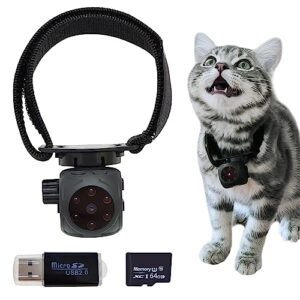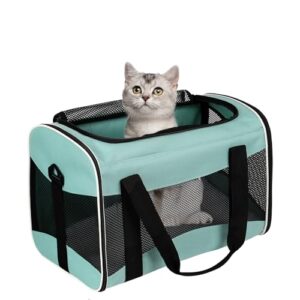Litter Box Training Aids: A Comprehensive Guide
Introduction
Litter box training is an essential aspect of cat ownership, serving as a cornerstone of feline hygiene and household cleanliness. However, this process can often prove challenging for both cats and their human companions. Some cats may struggle with consistency, while others might resist using the litter box altogether. This comprehensive guide delves into the world of litter box training aids, exploring the various tools and techniques available to help your feline friend master this crucial skill. By understanding and effectively utilizing these aids, you can create a positive and successful litter box experience for your cat.
Types of Litter Box Training Aids
A. Attractants
- Scented litter: Many brands offer litter with appealing scents that can draw cats to the box. These scents are carefully formulated to be enticing to felines without overwhelming their sensitive noses.
- Catnip sprays or treats: Catnip’s allure can be used to make the litter box area more appealing. Sprinkle some dried catnip near the box or use a catnip spray to create positive associations.
- Cat pheromone diffusers: These devices release synthetic versions of feline facial pheromones, creating a sense of comfort and familiarity that can help reduce stress around the litter box area.
B. Rewards
- Treats or catnip: Offer small treats or a pinch of catnip immediately after your cat uses the litter box correctly to reinforce the behavior.
- Praise or petting: Many cats respond well to verbal praise and gentle petting. Use a soft, encouraging voice to commend your cat after successful litter box use.
- Playtime: Engage in a short play session with your cat’s favorite toy after they use the litter box, creating a positive association with the activity.
C. Encouragements
- Kitten-shaped litter boxes: These specially designed boxes can be less intimidating for young kittens or small cats, making the transition to litter box use smoother.
- Boxes with ramps or lids: Ramps can assist older or mobility-impaired cats, while lids provide privacy for shy felines. Experiment to see which style your cat prefers.
- Non-slip mats: Place textured mats around the litter box to catch any stray litter and provide secure footing for your cat as they enter and exit the box.
D. Deterrents
- Aluminum foil or double-sided tape: These materials can be placed in areas where you don’t want your cat to eliminate, as most cats dislike the texture and sound.
- Motion-activated air sprays: These devices emit a harmless burst of air when triggered, discouraging cats from inappropriate elimination in specific areas.
- Bitter apple spray: This non-toxic spray has an unpleasant taste that can deter cats from marking or eliminating in unwanted areas.
E. Cleanliness
- Litter scoop and liners: Regular scooping is crucial for maintaining a clean litter box. Use a sturdy scoop and consider litter box liners for easier cleaning.
- Enzymatic cleaners: These specialized cleaners break down odor-causing bacteria, ensuring thorough cleaning of the litter box and surrounding areas.
- Regular cleaning schedule: Establish a consistent routine for scooping, changing litter, and deep cleaning the box to maintain hygiene and encourage regular use.
Selecting the Best Aid for Your Cat
The most effective litter box training aid for your cat will depend on their individual preferences, age, and personality. What works for one cat may not work for another, so it’s important to approach the process with patience and flexibility. Consider your cat’s behavior and habits when choosing aids:
- For shy or anxious cats, focus on creating a calm environment with pheromone diffusers and privacy hoods.
- Playful kittens might respond well to treat rewards and catnip-infused litter.
- Older cats may benefit from easily accessible boxes with low sides or ramps.
Experiment with different combinations of aids and observe your cat’s response carefully. Be prepared to adjust your approach based on what you learn about your cat’s preferences.
Effective Use of Training Aids
- Introduce aids gradually: Sudden changes can be stressful for cats. Introduce new litter, boxes, or aids one at a time to avoid overwhelming your pet.
- Be patient and consistent: Litter box training takes time. Maintain a consistent routine and use aids regularly for the best results.
- Avoid punishment: Never punish your cat for litter box mistakes. This can create negative associations and make training more difficult. Instead, focus on positive reinforcement and addressing any underlying issues.
Troubleshooting Common Litter Box Problems
If your cat continues to struggle with litter box use despite employing various aids, it’s essential to consider potential underlying issues:
- Medical conditions: Urinary tract infections, kidney problems, or digestive issues can affect litter box behavior. Consult with a veterinarian to rule out any health concerns.
- Stress or anxiety: Changes in the household, new pets, or other stressors can impact litter box use. Address these factors and consider calming aids like pheromone diffusers.
- Litter box aversion: Your cat may dislike the type of litter, box location, or cleaning frequency. Experiment with different options to find what works best.
- Multiple cat households: Ensure you have enough litter boxes (generally one per cat, plus one extra) and that each cat has access to a preferred box.
Conclusion
Litter box training aids can be invaluable tools in helping your cat master this essential skill. By understanding the various types of aids available and how to use them effectively, you can create a positive and successful litter box experience for your feline companion. Remember that every cat is unique, so be prepared to adapt your approach as needed. With patience, consistency, and the right combination of aids, you can help your cat become a confident and reliable litter box user, ensuring a harmonious living environment for both you and your pet.
-
Stainless Steel Cat Litter Box with Lid, XXL Enclosed Anti-Urine Leakage Litter Box with Removable Lid & Scoop for Big Cats by [Brand Name]
Rated 0 out of 5$139.99Original price was: $139.99.$129.99Current price is: $129.99. Litter Box Training Aids -
Pet Collar Camera: Spy Camera Hidden Collar for Dogs and Cats with 64GB SD Card
Rated 0 out of 5$22.68 Cat Cameras -
HD 1080P Cat Camera Collar with 16GB SD Card for Indoor/Outdoor Pet Monitoring
Rated 0 out of 5$23.99 Cat Cameras -
Catit Cat Carrier – Soft-Sided, Airline Approved, for Medium to Small Cats and Dogs up to 15 Lbs
Rated 0 out of 5$19.98 Cat Carrier Training Accessories





